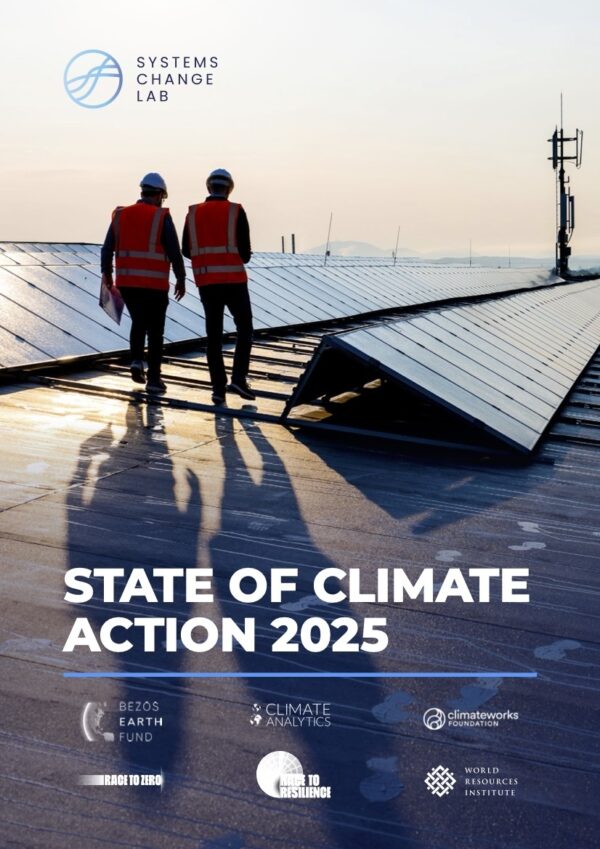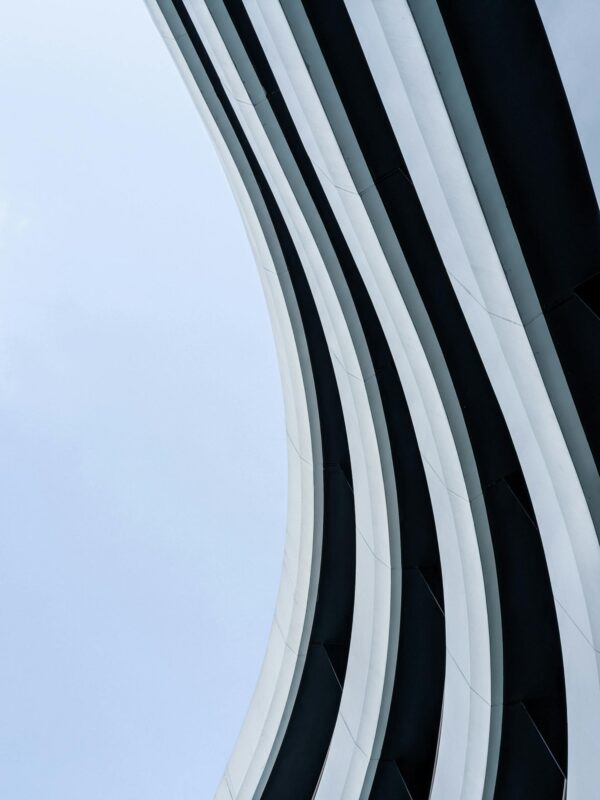Latest science on the 1.5°C limit of the Paris Agreement
Authors
Share

The 1.5°C limit is the enduring, legally significant temperature goal of the Paris Agreement. Alongside the requirement to achieve net zero greenhouse gas emissions in the second half of the century, the 1.5°C limit sets the legal framework for understanding the level of ambition Parties have committed to under the Paris Agreement. This limit is often seen as key to the survival of the most vulnerable countries and is grounded in robust scientific evidence.
The 1.5°C limit and net zero goals of the Paris Agreement are designed to provide guidance based on the best available science on:
- emissions reduction rates needed to avoid and/or limit overshoot,
- required rollout rate for renewable energy, electric vehicles,
- energy efficiency goals
- methane reductions goals
- and many other aspects of energy and climate policy.
The 1.5°C threshold represents an ethical and moral boundary established to avoid the most dangerous impacts of climate change. Since its adoption in 2015, the science underpinning the necessity of this limit has only grown more conclusive. Exceeding it would significantly increase the likelihood of severe, widespread, and irreversible, climate impacts.
In 2024, global annual average temperature exceeded 1.5°C above pre-industrial levels, marking the warmest year on record. This record temperature reflects a combination of increasing anthropogenic greenhouse gas emissions, reduced air pollution, and short-term natural variability including El Niño. It’s important to note that the Paris Agreement 1.5°C limit refers to long-term human-induced warming assessed over 20- to 30-year periods above pre-industrial time. By that definition, this limit has not yet been reached.
Read our FAQs on the latest science on the 1.5°C limit of the Paris Agreement
The long-term temperature goal
- In Article 2.1 of the Paris Agreement, the long-term temperature goal aims to limit warming to 1.5°C, while always holding temperature “well below 2°C”.
- The Paris Agreement language of “holding well below 2°C” can only be understood as requiring a meaningful improvement on warming outcomes of the prior “hold below 2°C” goal established in Cancun (COP 16) and Copenhagen (COP 15).
- The goal of holding warming “below 2°C” was widely understood to be a pathway that held warming below 2°C with a likely or greater probability and hence median peak warming of 1.7 to 1.8°C.
- Because of the concerns expressed at Copenhagen by the SIDS and LDCs over the adequacy and safety of the “hold below 2°C” goal based on the findings of the IPCC AR4, there was a UNFCCC review which was supported by a Scientific Structured Expert Dialogue. This review concluded that a warming of 2°C can be considered safe “is inadequate”’ and that limiting global warming to below 1.5°C would come with several advantages in terms of coming closer to a safer “guardrail”.
- In the IPCC AR6, the C3 scenarios limit peak warming to 2°C throughout the 21st century with a likelihood of greater than 67%, which corresponds to a “hold below 2°C” (e.g., the former Cancun goal) and means a median warming of 1.7°C [range 1.6-1.8°C].
- The clear implication of moving to a “well below 2°C” formulation in Paris is that it would be a significant improvement on the median warming outcome and it would be reasonable to conclude that this would need to be at least a 0.1°C improvement.
- The reference to holding warming “well below 2°C” is understood in IPCC AR6 as a low or limited overshoot of 1.5°C – holding peak warming below 0.1°C above 1.5°C, in other words, peak warming of less than 1.6oC.
Net zero emissions
- Article 4.1 is designed to operationalise Article 2.1 through an emission pathway that “achieves” net zero greenhouse gas emissions in the second half of this century.
- Both Articles 2.1 and 4.1 were recognised in the IPCC AR6 pathways, where category C1a limited peak warming to <1.6°C (low or no overshoot) and achieved net zero greenhouse gas emissions in the 2070s, resulting in global warming being about 1.2°C by 2100 (range: 1.1-1.4°C).
- Articles 2.1 and 4.1 were designed together to get a temperature peak close to 1.5°C by mid-century from which warming levels would drop again and be substantially lower than 1.5°C by 2100 (around 1.2oC warming).
- The goal was set considering equity, to minimise the injustice created by higher levels of warming to the most vulnerable, on the basis of attempting to minimise harm.
- The Paris Agreement’s long-term temperature goal, along with Article 4.1, is an enduring and critical component of the legally binding Paris Agreement that governs its implementation.
- Both Article 2.1, the long-term temperature goal, and Article 4.1, were designed to be operationalizable – that is, to provide concrete guidance to Parties as to the rate and scale of emission reductions that needed to be achieved globally and that could then be downscaled to national and sectoral levels.
- It is important to recall that the push towards peaking of emissions by 2025, the call for roughly halving emissions by 2030, achieving net zero CO2 emissions by around mid-century and net zero greenhouse gas emissions globally shortly afterwards derive only from the combination of Article 2.1 and Article 4.1.
- The first thing to recall is that observed temperature change, which includes natural variability, is not the same as human-caused warming estimates. The second thing is that temperature estimates of individual years or in specific regions cannot be directly compared to the Paris Agreement’s 1.5°C limit.
- The global observed annual average temperature increase above pre-industrial levels reached above 1.5°C in 2024, making 2024 the warmest year on record.
- Observed warming include natural variations in the climate system such as El Niño superimposed on top of the human-induced warming due to rising greenhouse gas emissions.
- Research has found that the recent extreme El Niño Southern Oscillation (ENSO) event, added to human induced warming, is a likely major contributor to the 2023/24 temperature record including particularly high sea surface temperatures around the globe.
- Other factors that could have contributed to the extreme warming of 2023 through to 2025 include large reductions in aerosol pollution, possible carbon cycle feedback, low cloud feedback and higher climate sensitivity than expected. The feedback possibilities referred to are responses of the climate system in reaction to human-induced warming and would be very worrying if significant.
- The Paris Agreement’s 1.5°C limit refers to human-caused long-term global average temperature change above pre-industrial (1850-1900) levels. Whether or not the Paris Agreement’s 1.5°C limit is reached or breached is assessed against 20-30 year average human induced warming.
- Of the around 1.5°C of total observed warming in 2024, about 1.36°C can be attributed to human activity.
- While we have not yet exceeded the Paris Agreement’s 1.5°C limit, these extreme warming trends come with increasingly devastating impacts for people around the world and the most vulnerable, and clearly signal that we are heading in the wrong direction.
- There’s a significant chance of the average warming of the next 5 years being at or above 1.5°C, as well as at least one of the next 5 years being the new warmest year on record.
- This appears largely connected to a near doubling of the average rate of warming, considered after removing natural variability which remains to be fully explained.
- Human-induced warming could reach 1.5°C global annual average by 2030 unless greenhouse gas emissions are reduced quickly.
- Current policies and 2030 NDC targets are heading the world towards 2.6-2.7°C warmingScientifically, we won’t know for certain for some time whether the Paris Agreement’s 1.5°C limit reached, as it is assessed against at minimum a 20-year average. But we do know for certain that if emissions are not lowered rapidly, reaching the 1.5°C limit could occur as early as 2030.
- In mid 2024, Carbon Brief updated its estimate of the timing for reaching a 20 or 30 year average warming of 1.5°C using a combination of historical data and climate model projections close to current policy emissions, assuming they continue.
- The results are shown in the table below, indicate quite similar findings to those from the IPCC AR6 should emissions continue present trends e.g., “it will most likely happen in the late 2020s or early 2030s in a world (SSP2-4.5) where global emissions remain around current levels.”
Approach 1.5°C exceedance year
Carbon Brief (Composite, SSP2-4.5) 2030 (2028 to 2036)
Copernicus 2033
AR6 Assessed Warming (SSP2-4.5) 2031 (2024 to 2043)
AR6 ScenarioMIP (SSP2-4.5) 2030 (2021 to 2046)
Table 1. 1.5°C exceedance year in different approaches. Source: Carbon Brief
- As described above, the Paris Agreement long-term temperature goal is understood as meaning peak warming needs to be <1.6oC, an overshoot of 1.5°C by <0.1oC.
- Fully complying with the Paris Agreement does not allow for much overshoot because of Article 4.1 and the need to achieve net zero greenhouse gas emissions in the second half of the century.
- Article 4.1 if operationalised would physically limit the magnitude of any overshoot of 1.5°C and its duration.
- Emissions pathways compatible with the Paris Agreement need to be consistent with both Article 2.1 (peak temperature well below 2°C) and Article 4.1 (net zero GHGs in the second half of the century, leading to declining temperatures) and this has consequences for the magnitude and duration of any overshoot as well as what happens after warming peaks.
- This means that pathways assessed by the IPCC that are fully compatible with the Paris Agreement – meaning both Article 2.1 and Article 4.1 – allow for no, or limited overshoot of <0.1°C.
- A limited duration overshoot of 1.5°C by <0.1°C is consistent with the Paris Agreement, with warming dropping from peak levels to significantly below 1.5°C by 2100.
- The first point to remember in relation to overshoot is that scientifically we won’t know for certain whether the 1.5°C warming level is overshot for some time.
- The second main point is that unless emissions are reduced very quickly (>50% by 2030), greater than 0.1°C overshoot becomes inevitable.
- If emissions are reduced quickly enough, then overshoot can be limited and dangers of carbon cycle and other feedbacks strictly limited. The current focus must be on the extremely urgent need for emission reductions to minimise any breach of the 1.5°C limit.
- Overshooting the Paris Agreement’s 1.5°C limit (peak warming above 1.6°C) would represent a serious policy failure and is not and cannot be a strategy.
- In the event of overshoot, the Paris Agreement provides strong operational guidance on the level and rate at which mitigation action should be undertaken to reduce the breach of the limit and be fully compliant with all other elements of the Agreement, including getting to net zero greenhouse gas emissions in the second half of the century.
- 1.5°C-aligned action would halve the speed of global warming in the 2030s, and halt it by the middle of the century. This warming slowdown is critically important to enable adaptation and limit irreversible loss and damage.
- Stringent mitigation in line with the 1.5°C goal would have rapid and sustained effects to limit human-caused climate change.
- Benefits of 1.5°C mitigation pathways would be felt relatively quickly with discernible effects on greenhouse gas and aerosol concentrations improving air quality within years, and slow-down warming compared to a world with current policy greenhouse gas emission levels over the next 20 years.
- Planetary resilience requires efforts to reduce emissions in the near-term.
- Limiting warming to 1.5°C substantially improves the effectiveness of adaptation strategies, reducing climate-related risks with less effort and investment compared to higher warming. The IPCC found with high confidence that the consequences of climate change for adaptation can be significantly reduced with warming limited to 1.5°C whereas at 2°C warming, adaptation becomes more challenging, costlier, and less effective.
- Near-term action that limits global warming to 1.5°C would reduce future impacts as well as loss and damage (but cannot eliminate it). For instance:
- Limiting temperatures to 1.5°C would retain twice as much glacier mass compared to current policy pathway at 2.7°C (53% vs. 24%).
- Temperatures stabilizing at current levels would mean around 39% of glacier mass loss, corresponding to 113mm of sea level rise.
- Loss and damage escalates with every increment of global warming. Seemingly small differences in warming of only fractions of a degree have significant implications in all countries and regions of the world but especially in those more strongly affected or less able to respond than others, including SIDS and LDCs.
- Marine heatwaves are a growing concern that threaten biodiversity, coral reefs and the provision of ecosystem services. The number of Marine Heatwave days is projected to increase on average by a factor of 16 for a warming of 1.5°C relative to preindustrial levels, by a factor of 23 for a warming of 2.0°C, and by factor of 41 for a warming of 3.5°C.
- Deoxygenation of the world’s oceans is an increasing threat and research has indicated that “deoxygenation of the ocean’s middle depths that support much of the world’s fished species” was already occurring in 2021, effecting fisheries globally. Even if CO2 emissions and global warming were stopped, the deep ocean is projected to ultimately lose more than 10% of its pre-industrial oxygen content.
- Marine heatwaves on top of ongoing deoxygenation have caused a massive surge in the co-occurrence of marine heatwaves and low-oxygen extreme (compound low-oxygen extreme and heatwave) causing serious damage to ecosystems and will become progressively more frequent and intense as warming increases.
- At 1.5°C, nearly 25% of the world’s population – much of South Asia, parts of sub-Saharan Africa, Latin America, and northern Australia would be exposed to conditions of lethal heat and humidity in which humans would reach their limit of being able to survive without cooling assistance such as air conditioning. Exposure increases rapidly with warming so periods of lethal heat would occur even more often and across larger parts of the world, and by 3oC would overtake more than half the world’s population.
- Under a 2°C pathway, around 80% of people born in 2020 will experience unprecedented lifetime exposure to heatwaves. This compares to 52% under a 1.5 °C pathway.
- Limiting warming to 1.5°C will limit the increase in heat exposure but more importantly, lead to peaking and declining of this exposure towards the end of the century as global warming drops from peak levels.
- Peaking warming before mid-century is needed to reduce and stabilise unprecedented heat exposure.
- Under low and very low emission scenarios, the chance of record temperatures declines since its occurrence depends on the rate of warming.
- The current level of global warming has made record-breaking daily maximum temperatures over land more than four times more frequent (2016–2024) compared to the pre-industrial period. Under a 2.7°C warming scenario by 2100 (SSP2-4.5), such extreme heat records could occur 7.3 times more frequently. In contrast, limiting warming to 1.5°C (SSP1-1.9) would restrict this increase to about 1.8 times the pre-industrial baseline, lower than those observed today.´
Download briefing to see figures highlighting projected changes in record hot and dryness under different emissions pathways, and the estimated return periods for at least 6 hours of continuous non compensable heat stress in a given year.
- Overshoot above 1.5°C of 0.1°C or greater is not consistent with the Paris Agreement's Long-Term Temperature Goal.
- Every increment of warming will result in rapidly increased irreversible and adverse impacts and risks, with a longer and greater overshoot further increasing these risks and impacts.
- Increasing exposure to extreme heat is one of the well-established impacts of global warming and the warmer the climate, the greater will be the occurrence, intensity, duration and geographic scope of extreme heat.
- Exceeding 1.5°C of warming with even a temporary overshoot would result in more irreversible losses and adverse impacts, including species extinctions, the loss of ecosystems and the services that they provide, and damage to mountain and coastal ecosystems.
- About 2% of the mass of mountain glaciers will be lost more or less permanently for every 0.1°C overshoot.
- If peak warming exceeds 1.5°C, ambitious mitigation efforts that focus on lowering temperatures again after an initial overshoot would lead to less loss and damage in the long-term.
- Reversibility of impacts after overshoot is not a given. Some consequences of overshoot will be irreversible for certain polar, mountain, and coastal ecosystems—for example, due to ice sheet and glacier melt and sea level rise.
- Some earth system feedbacks made worse by overshoot of 1.5oC such as the thawing of permafrost, loss of carbon sequestration capacity in forest vegetation due to extreme heat warming and drought, will also exacerbate impacts through the release of additional greenhouse gases and make the mitigation task harder.
- There are already major challenges to get the amount of carbon dioxide removal (CDR) needed to achieve net zero greenhouse gas emissions and every 0.1°C overshoot of the 1.5°C level will require approximately and additional 220 GtCO2 of negative CO2 emissions to overcome.
- We will not be able to return to the same world as before, since some climate impacts, like sea level rise, will not be reversible when temperatures drop again after an overshoot.
Download briefing to see figure on illustrative climate outcomes under different conceptual categories of peak and decline pathways.
- Every increment of overshoot above 1.5°C increases the risk of reaching tipping points in the climate system:
- A “tipping point” is a critical threshold beyond which a system reorganises, which happens often abruptly and irreversibly. These systems are “tipping elements” such as the Greenland and West Antarctic ice sheets, the Atlantic Meridional Overturning Circulation (AMOC), coral reefs, or the Amazon rainforest.
- Only by ensuring that that any overshoot is temporary would the risks that come with crossing these tipping points be reduced.
- Coral reefs: The recent massive and unprecedented global coral reef bleaching event globally signals that a tipping point has been reached or is extremely close for coral reefs.
- Ice sheets: Critical thresholds for the major ice sheets of Greenland and Antarctica could be approached at around 1.5°C warming and a recent review finds that at 1.5oC warming, even a “best-case scenario will result in a steady increase in the rate of GMSL [global mean sea level], but with no evidence to suggest it will halt or even slow the rate of SLR from the world’s ice sheets.” This review concludes that for a chance to prevent multi-metre sea level rise in the longer-term, global warming would need to be brought back towards maximum 1°C above pre-industrial.
- The Greenland ice sheet may effectively irreversibly decay over centuries with warming close to 1.5-1.6°C– if melted it would raise sea level by 7.4 metres.
- The West Antarctica ice sheet contains around 5.3m of sea level rise equivalent, is long recognised as unstable, could have a collapse threshold close to 1.5°C of warming, resulting in several metres of sea level rise over a few centuries. Several authors have argued that the tipping point may have been crossed for at least part of this ice sheet.
- Parts of the East Antarctic ice sheet, which contains around 52.2m of sea level rise equivalent, is known to have unstable components vulnerable to collapse with warming of 2-3oC.
Amazon rainforest: This globally unique ecosystem which has existed over the last 65 million years, could rapidly die back if the combined effects of deforestation and global warming exceed its tipping points. A recent review of the risks identified 1.5°C as a safe boundary, and 2oC warming as a critical threshold for loss. This is combined with deforestation thresholds of 10% as a safe upper boundary and 20% as a critical level of deforestation which, combined with warming, could tip the Amazon towards a Savannah-like ecosystem.
Deforestation is at 17% across the entire Amazon basin and approaching 20% in the Brazilian Amazon. In 2024, on the back of record global warming close to 1.5oC and unprecedented drought, fires broke out in the Amazon (and other tropical forests), destroying massive areas of forest. It is increasingly clear that the risk of a tipping point of the Amazon rainforest is getting closer, which would turn it into a drier, less productive Savannah-like ecosystem with large adverse effects on the millions dependent on the rainforest, and which would have impacts for the hydrological cycle throughout the continent and globally.
- Glaciers: Global-scale glacier mass loss profoundly affects our society and the natural environment, contributing to sea-level rise, influencing downstream water resources, affecting biodiversity and ecosystems, exacerbating natural hazards and having a negative effect on the tourism industry. A recent study underscores that substantial global glacier loss is unavoidable at current level of warming, but strong climate policies will save twice as much ice as today’s path. 24% of present-day glacier mass will remain if the world were to warm to 2.7°C as compared to 54% of glacier mass if we limit warming to 1.5°C.
Atlantic Meridional Overturning Circulation (AMOC): A collapse of the Atlantic Meridional Overturning Circulation (AMOC), which is already experiencing unprecedented severe slowdown, would be a very high consequence event. Over several decades, it would have major impacts on the North American, European and Near Eastern climate, food production and ecosystems, would lead to changes in atmospheric circulation including the weakening of African and Asian monsoons and drying out in Europe.
Changes in tropical circulation could also accelerate or trigger an Amazon rainforest tipping. An AMOC collapse could lead to profound cooling in northern Europe even with global warming, which would threaten the viability of agriculture in Europe, creating threats to food security globally. Other impacts would include reduced ocean CO2 uptake, additional sea level rise on the East Coast of the United States and disruption to fisheries and ecosystems globally.
- In the IPCC AR6 it was reported that “While there is medium confidence that the projected decline in the AMOC will not involve an abrupt collapse before 2100, such a collapse might be triggered by an unexpected meltwater influx from the Greenland Ice Sheet.”
- Numerous studies since the completion of the IPCC AR6 assessment report indicate that the risk of a collapse of all or part of the AMOC the system has been underestimated and that there is increasing risk of this threshold being crossed even in the next several decades and under 2°C warming. The uncertainty around the timing and proximity of tipping of this system could be extremely dangerous given the consequences of AMOC slow down or shut down globally.
- Limiting overshoot and halting warming would reduce the risk of critical human and natural systems reaching their adaptation limits.
- For countries with substantial adaptive capacity, including sufficient resources, slowing the warming rate may buy time for more adaptation efforts. Highly vulnerable countries who are already struggling to adapt are likely to hit limits to adaptation sooner.
- Research shows that peak warming, and not the long-term temperature outcome, is the determinant of adaptation needs and costs. This means that only a halt in warming could avoid them.
- The IPCC expresses concern that the efficacy of adaptation strategies is likely to diminish as global warming escalates. This is coupled with a much higher need and cost to adapt above 1.5oC.
- Adaptation effectiveness decreases with increased warming, and limits to adaptation constrain the option space available for adaptation.
- Soft adaptation limits are already being reached due to high costs. Increases in climate impacts lead to adaptation options being costlier.
- At current warming levels, the 2024 Adaptation Gap Report establishes adaptation costs for developing countries to be around US$215 billion/year this decade.
- However, the modelled costs of adaptation were also projected to rise over future decades towards 2050, though costs will vary with progress towards global mitigation.
- Crossing adaptation limits through peak warming can lead to measures being unavailable temporarily (during the overshoot period) or permanently, e.g., destruction of sensitive ecosystems used for adaptation.
- For example:
- Above 1.5°C, limited freshwater resources pose hard adaptation limits for small islands (potentially reversible).
- Coral reefs will not be able to adapt (potentially irreversible).
- The combined effect of all present policies and countries’ 2030 Nationally Determined Contributions (NDCs) will warm the world by 2.6-2.7oC.
- There is a very large gap between where emissions need to be in 2030 for 1.5°C alignment and where countries’ targets and policies are heading.
- This emission gap needs to be closed if the world is to have much chance of limiting global warming close to 1.5°C.
- A present there is a large implementation gap not just for 2030 targets but also in relation to the implementation of promised net zero targets or other long-term targets made by countries. If all pledges and net zero targets were implemented, 2100 warming would reach 2.1°C, however the implementation of these is not in sight at present.
- As of June, 2025 only 24 countries have submitted 2035 NDC targets and only one of these is 1.5°C-aligned.
- To keep 1.5°C within reach and limit any potential overshoot of 1.5°C, very stringent emissions reductions in this decade until 2030 are required. To limit warming to 1.5oC with no or low overshoot (<0.1oC) the IPCC AR6 assessments shows that global greenhouse gas emissions need to roughly halve by 2030 relative to 2019 levels, and reduce by around 60% by 2035. CO2 emissions must reach net zero around mid-century and total GHG emissions net zero in the second half of this century (around 2070s).
- If we cut emissions in line with a 1.5°C pathway, the rate of warming per decade could halve in the 2030s, with warming coming to a halt soon after net zero CO2 emissions are achieved.
- Science confirms that we need to get out of fossil fuels:
- CO2 emissions from existing fossil fuel infrastructure alone already exceed the remaining carbon budget for 1.5°C. Emissions from existing and planned infrastructure would exceed this budget by almost two-fold.
- Reducing GHG emissions requires a substantial reduction in overall fossil fuel use, minimal use of unabated fossil fuels, and use of CCS in the remaining fossil fuel systems; removing fossil fuel subsidies alone can reduce GHG emissions by up to 10% by 2030.
- The Production Gap Report found that coal needs to be effectively phased out by 2040 globally, and oil and gas reduced 75% by 2050 in 1.5ºC pathways
- The 2024 Emissions Gap Report confirms the IPCC finding that mitigation options costing US$200/tCO2e or less are sufficient to bridge the emissions gap identified for 2030 and 2035.
- As recent research has shown, the main barriers are political, and not technological. Countries need to submit new and updated 1.5°C compatible NDCs, with a focus on action before 2030, and fully implement those NDCs, to keep 1.5°C within reach.
- Achieving net zero CO2 emissions would likely lead to global temperature increase halting and is therefore fundamental to limit overshoot.
- Achieving net zero CO2 emissions by around 2050 is critical to halt the warming close to 1.5°C. There is a good probability that when CO2 emissions reach net zero, warming will halt, however to ensure that warming and CO2 concentration continue to decrease there will need to be a long period of net negative CO2 emissions.
- Net zero CO2 emissions however will not be sufficient for global warming to decline: this requires achieving net zero greenhouse gas emissions.
- Achieving net zero greenhouse gas emissions in the second half of the century as per the Paris Agreement Article 4.1, followed by a period of net negative greenhouse gas emissions, would lead to a decline in global warming to around 1.2oC at the end of the century.
- Achieving net zero greenhouse gas emissions in the second half of the century and by the 2070s is critical to reducing warming by 2100 and the extent of net negative CO2 emissions will determine how far warming drops by 2100.
- This will result in declining CO2 concentration and declining global temperatures which will limit long-term climate risks compared with a stabilization of global warming at 1.5oC.
- The importance of scenarios that reduce warming by 2100 was already recognised by the IPCC in the development of SSP1-1.9 which brings warming back to around 1.2°C by 2100 and then back below warming levels of the 1990s by 2300. In the IPCC AR6 these are scenarios largely within category C1a which limit warming to 1.5°C (>50%) with no or limited overshoot and achieve net zero GHGs in the second half of the century followed by negative GHG emissions.
- Lowering warming in the long run is absolutely critical to minimising the risk of massive sea level rise from ice sheet destabilisation, which was well recognised in IPCC AR6.
- Maintaining +1.5°C global warming is too high for ice sheets as it will lead to long-term multi-metre sea level rise as well as the risk of abrupt sea level rise from destabilisation of the Western Antarctic ice sheet and/or some parts of the East Antarctic.
- The need for lower levels of warming to limit long term SLR was already known and was a key motivation for Article 4.1 as it was negotiated by AOSIS and LDCs in Paris.
- This risk was confirmed and amplified in the IPCC AR6 which showed for the first time the risk of high-end sea level rise within two centuries from ice sheet destabilisation unless warming is strictly limited.
- Even current warming will lead to several meters of SLR over centuries, causing loss and damage.
- A literature review published in a leading journal has confirmed and extended the findings of the AR6.
- Global mean temperatures need to be brought closer to 1°C above pre-industrial levels to minimise the loss of ice from the ice sheets – temperatures much cooler than present and sustained no higher than around 1°C may be critical to this.
- For the tropical coral reefs catastrophic damage is already occurring and was well predicted for 1.5°C global warming. The only long-term chance for these reefs to recover is to ensure that warming is reduced as rapidly as possible following peak levels.
- Ocean acidification is a critical problem and reductions in CO2 concentration will be needed to halt and reduce acidification.
- This only comes about under 1.5°C-aligned pathways and net zero GHG emissions by the 2070s because this requires large scale CDR.
- Recent research shows that ocean acidification may have already crossed planetary boundaries by year 2000.
- As the figure below shows, we can only get ocean acidification back to levels of the 2000-2010 period under 1.5°C pathways.
Download briefing to see figure on global mean ocean acidification projections to 2100.
- The IPCC is clear that deployment of CDR in 1.5°C pathways – to lower emissions in the near-term, counterbalance residual emissions to help reach net zero in the mid-term, achieve net negative emissions in the long-term – comes in addition to deep, rapid, and sustained emissions reductions, and that CDR has feasibility and sustainability constraints, especially at the large scale.
- In 1.5oC pathways, near-term CDR is mostly afforestation and reforestation (“conventional” CDR) however many the countries are currently over relying on this for their NDC targets and their goals, committing unrealistic amounts of land for CDR, which is creating significant risks for the Paris agreement goals.
- Current strategies primarily involve land-based measures, such as afforestation, reforestation, and soil carbon enhancement, which pose potential adverse effects on biodiversity and uncertainty around the scale and durability of potential climate benefits.
- Furthermore, there are growing concerns about the depletion of land carbon uptake as warming levels increase, decreasing its mitigation potential with record warming of 2023 having had had a strong negative impact on the capacity of terrestrial ecosystems to store carbon.
- Technological CDR at scale will be needed at very large scale to bring greenhouse gas emissions to net zero by the 2070s, however, this will first require deep reductions in the CO2 and greenhouse gas emissions.
- Land-based CDR cannot compensate for the lack of action on reductions in CO2 and other greenhouse gas emissions, and adverse consequences for the earth system have-not been considered in policies that use the land sector for Net zero approaches by countries The costs and technological advancements needed to scale up geological storage of CO2 make it necessary to pursue reductions soon.
- Marine-based CDR also does not compensate for actual emission reductions. It could have multiple challenges in terms of scalability and impacts on biodiversity. Furthermore, the net oceanic uptake rate of CO2 will likely decrease in the future owing to several converging trends: reduced storage capacity owing to continuing ocean acidification; and enhanced outgassing of natural CO2 owing to ocean warming and changes in ocean circulation and biology
- In order to achieve net zero greenhouse gas emissions, with or without overshoot of 1.5°C, and in the event of overshoot to draw down temperatures CDR at scale is “unavoidable”.
- Because CDR is difficult and will be hard to scale, and CO2 storage space is more limited than previously thought, it is critical that the need for it is reduced as much as possible, and this means eliminating residual emissions from the so-called “hard to abate” sectors (cement, agriculture, fertilizer, iron and steel, aviation, shipping) as much as possible.
- Unfortunately, dealing with any overshoot of 1.5°C will require CDR deployment at scale - approximately 220 GtCO2 of negative CO2 emissions will be needed for every 0.1°C overshoot of the 1.5°C level.
- The need for CDR would also be exacerbated should the climate system be more sensitive to CO2 and other greenhouse gas emissions than presently assumed, and there is evidence of this growing.
- CDR options can be classified into “conventional” CDR (land-based measures such as afforestation and reforestation), which makes up almost all of the CDR deployed, and “novel” CDR (e.g., Bioenergy with Carbon Capture and Storage, BECCS, and Direct Air Carbon Capture and Storage, DACCS), which makes up <0.1% of total CDR deployed.
- SRM does not address the root cause of climate change - increased greenhouse gas concentrations in the atmosphere. If it were deployed, it would not reverse or halt climate change but create a different engineered future. Masking the link between climate impacts and mitigation would undermine the delicate foundations of global climate agreements.
- No mature solar geoengineering technology exists today and the scientific understanding is far away from providing a basis for a policy discourse on SRM deployment.
- SRM would be a multi-century commitment – the SRM deployment commitment for 1.5°C “peak shaving” could be over 400 years, even with optimistic CDR technology assumptions.
- Solar geoengineering would result in new and additional impacts on and risks to human and natural systems, mainly driven by changes in temperature, precipitation and extreme events. These would be distributed unequally, with regions already most vulnerable to climate impacts disproportionately affected.
- SRM may mask some problems effectively, such as heat exposure. However, it would create other problems, including shifts in precipitation patterns and it does not mask the impacts of carbon dioxide emissions on ocean acidification at all.
- SRM would put the world at risk of a termination shock - a sudden rise in global temperature if solar geoengineering suddenly ends or fails. This unknown warmer state would lead to considerable risks and impacts and would pose a serious challenge to adaptation, posing a worse problem than “conventional climate change”.
- There is a real danger in comparing the risks of SRM and climate change within a naïve risk-risk framework. The risks of SRM and climate change are not independent and could be compounding. Further, missing processes in current models do not represent the physical impacts of SRM on mitigation activity.
- For example, research has suggested a decrease in photovoltaic and solar power potential under stratospheric aerosol objections.
- Further research looking at both solar and wind energy in the Caribbean under different SRM methods shows diverging signals, highlighting the risks to energy sector planning.
- As global emissions have not peaked yet, given present trends in CO2 and methane emissions, the likelihood that the climate is running hotter than expected, as well as a possible increase in climate sensitivity, limiting warming to 1.5°C with no overshoot appears almost certainly impossible.
- The rate of increase of human-induced warming has been at an unprecedent 0.27o C per decade over 2015-2024. Average human-induced warming would reach 1.5o C in about five years if emissions continued at current levels.
- Limiting global warming to 1.5°C with low overshoot[1] (<0.1°C above 1.5°C) appears very unlikely due to the lack of action to date, leading to greater cumulative emissions after 2020 than predicted by the IPCC AR6 C1a pathway.
- This creates possibility that the climate system will warm more than 0.1°C above 1.5°C even if global greenhouse gas emissions are halved by 2030.
- If emissions are cut ~50% by 2030, and we get lucky on the climate response, low overshoot is still possible.
- Due to the historical failure to peak and rapidly reduce emissions there are now greater cumulative emissions than assumed in the IPCC pathways for the period 2020–2025, so that emission reductions, if they start soon, are starting from emissions levels around 25% higher than in the AR6 scenarios.
- Unless emissions are reduced quickly, higher overshoot (>0.1°C) becomes inevitable. If emissions are not halved by 2030 but still aggressive action is taken, peak warming could be limited to 1.6-1.7°C, and the most adverse impacts and loss and damage can be limited. If net zero greenhouse gas emissions are reached by ~2070, then 2100 temperatures could drop to <1.3ºC.
[1] Note that IPCC SR1.5 used the terminology “low overshoot” whereas the AR6 uses the terminology “limited overshoot”. Download briefing to see table illsutrating the possibility of successfully limiting peak warming to different maximum temperatures
- The IPCC is clear that current finance for mitigation and adaptation is insufficient. Public and private finance flows for fossil fuels still exceed those for climate adaptation and mitigation. The climate financing gap reflects a persistent misallocation of global capital.
- Finance is a critical enabler for accelerated climate action, and improved access to adequate financial resources, especially for vulnerable regions, sectors and communities is an important enabling condition for climate resilient development.
- If climate goals are to be achieved, both adaptation and mitigation financing needs to increase many-fold.
- The IPCC estimated that mitigation investment requirements for 2020 to 2030 to limit warming to 1.5°C would be 3-6 times greater than current levels. The 2024 Emissions Gap Report confirms that for a net-zero pathway, annual investments need to increase at least sixfold from current levels.
- The 2024 Adaptation Gap Report identifies that in order to meet NDC and NAP pledges, which would translate into 2.1 °C warming, US$387 billion/year are needed by developing countries up to 2030.
- The modelled costs of adaptation were also projected to rise over future decades towards 2050, though costs will vary with progress towards global mitigation
- The costs/needs of adaptation relative to finance flows are called the adaptation finance gap. This gap is estimated to be 10–18 times as much as international public adaptation finance flows.
- The IPCC is clear that there is sufficient global capital to close the global investment gaps but there are barriers to redirect capital to climate action. For example, removing fossil fuel subsidies would reduce global GHG emissions by up to 10% by 2030.
- The IPCC also states that economic benefits from avoiding damages from climate change, and from reduced adaptation costs, increase with the stringency of mitigation.
- Recent estimates of climate damage due to current policy warming (3oC) are close to two thirds of baseline economic growth globally to 2050.
- The economic benefits for human health from air quality improvement alone, arising from mitigation action, can be of the same order of magnitude as mitigation costs, and potentially even larger.
- Emissions already caused are estimated to reduce global income by an estimated of 19% by 2050 compared to a world without climate change
- This is six times higher than the total mitigation costs for staying below 2°C.
- Without fast and stringent climate action income per capita could be 60% lower by 2050 compared to the case without climate change damages.
- Recent research shows that without 1.5°C compatible climate action, the world would be committed to nearly 20% in income reduction until mid-century. These damages already outweigh the costs of limiting warming to below 2°C by sixfold by 2050 and will only increase further beyond.
Download briefing to see figure from the Emissions Gap Report 2022 on the estimated implications for global GDP of mitigation measures, co-benefits and climate damages.
- On many small islands, freshwater stress is expected to occur because of projected aridity change. Constraining warming to 1.5°C, however, could avoid a substantial fraction of water stress compared to 2°C.
- Risks from SLR and increased wave-induced run-up might leave several atoll islands uninhabitable, leading to forced displacement and non-economic Loss and Damage, such as a loss of identity, culture and sense of place. At 2°C warming, they could be almost fully covered.
- In SIDS, floods and storms are projected to result in additional loss and damage of $56 billion by 2050 under a 2°C warming scenario, representing an 11% increase in annual loss and damage over the next 23 years (2023–2045) compared with the past 23 years (2000–2022). These estimates do not include indirect economic impacts or the impacts of slow-onset events and therefore underestimate the actual loss and damage.
- From 2011 to 2022, the population affected by disasters in SIDS increased by around 120% and deaths per million rose by about 60%.
- Economic damages in SIDS are already substantial:
- SIDS constitute two-thirds of the countries suffering the highest relative losses from natural disasters and are acutely vulnerable to the impacts of climate change (between 1% and 9% of their GDP each year), with disaster-related damage as a percentage of their GDPs surging by nearly 90% from 2011 to 2022.
- Between 1970 and 2020, SIDS recorded damages of USD$ 153 billion due to weather, climate and water-related hazards, while average GDP for SIDS is around USD 13.7 billion.
- Since 1995, 20 tropical cyclones have caused damages estimated at more than 10% of GDP in the Caribbean and Oceania; in eight of these cases, the estimated damages exceed 50 percent of GDP.
- Climate-driven redistribution of tuna threatens SIDS economies and sustainability of the world’s largest tuna fishery, particularly for Pacific SIDS, as ocean warming lead to tuna moving away from their Exclusive Economic Zones, (EEZ) to the high seas. It some Pacific SIDS, tuna fishery’s access fees make up the majority of government revenue. Species migration therefore poses a significant economic threat. Research shows that the lower warming is kept, the smaller the impacts:
- At about 2.3oC warming, catch of key tuna species in ten Pacific SIDS' waters (EEZs) may decline by median 20.2% on average compared to the average catch from these areas in 2009−2018 as tuna shift to high seas. This level of warming would be reached under current policies by around 2060.
- At about 1.9oC warming the projected reduction the catch of key tuna in the waters of Pacific SIDS is median 3.4%. However, it can get as high as 11.9% for individual countries. This level of warming would be reached under current policies by around 2045
- Limiting warming to 1.5oC in line with the Paris Agreement, would provide a pathway to sustainability for tuna-dependent Pacific Island economies.
- Under current policies or NDCs, leading to end of year warming of 2.5-2.9°C as shown in figure 7, GDP losses would be substantial compared to a 1.5°C pathway – for instance for Trinidad and Tobago (see Figure 8 below).
Download briefing to see figures on Temperature Pathways to 2100 and GDP losses for Trinidad and Tobago under different scenarios.
- IPCC SR1.5 estimates that 14% and 37% of the world's population would be exposed to intense heatwaves under 1.5°C and 2°C warmer worlds, respectively. This rise will disproportionately hit LDCs because most of them are geographically placed in already hot regions, have scant cooling infrastructure, and have weaker public health systems.
- Millions in LDCs will experience life-threatening conditions at 2°C of warming.
- The Lancet Countdown on health and climate change finds that countries with low human development index (which largely overlaps with LDCs) are among those most affected by recent loss of labour productivity due to heat exposure at current levels of warming, losing 8% of GDP.
- LDCs in Africa had the highest prevalence of severe food insecurity in 2021, of which Djibouti had 49 percent and Comoros had almost 80 percent. Based on FAO data, the prevalence of severe food security in 2023 was at around 22% for LDCs, with an increasing cost of health diet for both country groups.
- 1.5°C of global warming has likely already caused3–7% decreases in tropical crop yields and is projected to raise to 10-15% or more at 2°C, sharply increasing hunger and child malnutrition in LDCs because of its highly climate sensitive agriculture and food systems.
- Over the last 50 years, 69% of worldwide deaths caused by climate-related disasters occurred in LDCs.
- IPCC projections indicatea significant rise in water scarcity between 1.5°C and 2°C, especially overdryland areas such as in the Sahel and Horn of Africa which host several LDCs. Moreover, an increase from 1.5°C to 2°C would result in glacier volume decline of 30-50% in Hindu-Kush Himalaya (HKH) by 2100 impacting water availability in South Asian LDCs. The population under acute water stress could increase multiple times, raising the threat of migration and conflict.
- While the losses due to climatedisasters are expectedto increaseworldwide, LDCs suffer these losses at a relatively larger scale because of their limited economic base and vulnerable sectors. Disasters impact the economies of LDCs around 10 times worse than the economies of the richest countries, as a share of their GDP.
- At 2°C, the expansion of vector-borne diseases such as malaria and dengue increase substantially compared to 1.5°C. LDCs in tropical zones will experience higher year-round disease transmission, overwhelming public health systems and reversing hard-won gains in disease control.
- Climate-induced displacement rises sharply at 2°C, especially in vulnerable deltas, low-lying islands, and arid regions. LDCs—already facing fragile governance and urban stress—could see mass internal and cross-border migration that challenges stability.
- Under current policies or NDCs, GDP losses would also be substantial compared to a 1.5°C pathway – for instance for Mali (see Figure below).
Download briefing to see figure on GDP losses for Mali under different scenarios.
- 1.5°C is the benchmark for climate action, rooted in science, from the global to the local level.
- Extreme climate impacts are already being observed around the world at current levels of human induced warming. Impacts will increase disproportionately with every increment of global mean warming and sustained levels of 1.5° already look extremely dangerous.
- Keeping 1.5°C in reach, and limiting any overshoot, means minimising the worst impacts and risks, and loss and damage.
- Economic benefits from avoiding damages from climate change and from reduced adaptation costs increase with the stringency of mitigation.
- The only way to stabilize temperature increase and limit overshoot is to get CO2 emissions to net zero globally as soon as possible – by around mid-century – with net zero greenhouse gases following a decade or two later to achieve a long-term temperature decline.
- The obligation to pursue efforts to align with 1.5°C applies to every individual actor – independent of the global outcome. Many actors, including non-state or local, have 1.5°C-aligned and/or net zero targets, and whose efforts would be undermined if we gave up on 1.5°C.
- While the most vulnerable are disproportionately affected by adverse climate impacts and loss and damage, in particular above 1.5°C, no country or region will be left unscathed.
- Giving up on 1.5°C would be a betrayal to the most vulnerable countries including SIDS and LDCs, which are on the frontlines of the climate crisis.
- Giving up on 1.5°C would be a “gift to carbon boosters” – the fossil fuel industry – as the head of the IEA Fatih Birol had put it in 2022, and would lead to a backsliding of ambition.
- Overshooting the Paris Agreement’s 1.5°C limit (peak warming at or above 1.6°C) would be a serious policy failure with numerous negative consequences, but does not mean a failure of the Paris Agreement.
- Scientifically we won’t know for certain for some time whether the 1.5°C limit – which is based on a long-term 20-year average warming – is reached.
- If we don’t rapidly reduce emissions, then the likelihood of overshooting 1.5°C will become a certainty.
- On the present emissions pathway overshoot is inevitable and unless emissions are reduced very quickly (>50% by 2030) greater than 0.1ºC overshoot also becomes inevitable.
- The scientific risk basis for the 1.5°C limit is much stronger since the Paris Agreement was negotiated – increasingly, it is seen as a physical limit to prevent and/or limit the risk of major earth system tipping points being crossed, which would cause catastrophic damages to ecosystems, people and infrastructure.
- Breaching 1.5°C of warming does not mean that the Paris Agreement limit is no longer valid.
- The Paris Agreement 1.5°C limit is the enduring, legal significant temperature goal of the Agreement, and along with the net zero goal (the requirement to achieve net zero greenhouse gas emissions in the second half of the century), sets the legal framework for understanding the level of ambition Parties have committed to reaching under the Paris Agreement. This limit is key to the survival of the most vulnerable countries.
- The Paris Agreement 1,5 limit will remain the legal, moral and political anchor to international and domestic climate action.
- Even if the 1.5°C warming level is exceeded, Articles 2.1 and 4.1 of the Paris Agreement provide a strong operational guidance on the level and rate at which mitigation action should be undertaken to reduce the breach of this warming level and to be fully compliant with all other elements of the Paris Agreement.
- Legally, there is a strong argument that breaching the 1.5°C warming level increases the obligation on all Parties to act with the highest possible ambition to reduce overshoot and comply with both Articles 2.1 and 4.1 of the Paris Agreement to bring CO2 emissions to net zero by mid-century and greenhouse gas emissions to net zero by the 2070s at the latest.
- The 1.5°C limit was not defined based on feasibility but rather on what is needed to minimise harm to the most vulnerable countries and was a key component of the equitable outcome embedded in the Paris Agreement.
- The challenges raised by the prospect of overshoot need to focus on what needs to be done to minimise harm and comply with the Paris Agreement rather than the cost of doing it.
- Irrespective of an approach to potential overshoot, the legal, moral and policy implications of the Paris Agreement long-term temperature goal in Article 2.1 and Article 4.1 remain valid and unchanged and can be operationalised to provide guidance on the emission reduction rates needed to avoid and/or limit overshoot.
- This means to focus on actions that limit the likelihood, magnitude and duration of any overshoot:
- Deep GHG reductions for 2030 and 2035 NDCs
- Global net-zero CO2 by ~2050 to halt warming and strictly limit any overshoot.
- Achieving net zero GHGs by 2070s to ensure warming drops from Peak levels reducing risks in ice sheet tipping points, ocean acidification and deoxygenation, and give Coral Reefs some chance of recovery
- Plan for rapid technological CDR be rolled out in coming decades on the back of deep GHG reductions.











